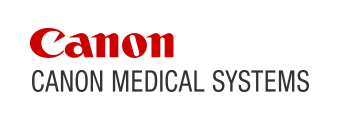
Our solutions
We are taking measures to increase the accessibility of lung cancer screening for the public, providing high-quality imaging at low dose, removing workflow inefficiencies, supporting the interpretation and communication of findings among clinicians, and streamlining follow-up procedures.
Together, we can improve the patient experience and ensure a high-quality and cost-effective screening program, while minimizing the burden of lung cancer on patients worldwide.

Easy access to screening
Mobile Imaging solutions allow you to conveniently perform scans, expanding accessibility and bringing the screening experience closer to your patients.

Efficient workflow
The INSTINX workflow experience optimizes efficiency, ensuring quick and seamless CT scans.

High-quality images at low dose
AI-enhanced CT lung cancer screening solutions, including the combination of SilverBeam filter and Advanced intelligent Clear-IQ Engine (AiCE) offer high-quality images with minimal noise and radiation exposure.

Risk stratification and diagnosis
Vitrea Advanced Visualization lung cancer screening solution automatically detects lung nodules, enables comprehensive lung analysis and supports faster and more efficient diagnosis.
Easy access from anywhere

Prof. Hannah Hazard- Jenkins, MD, FACS
Associate Professor of Surgery at the department of Surgery WVU School of Medicine
Director of the WVU Cancer Institute
Morgantown, West Virginia, USA
Cookies: We are sorry we can’t show you this video – as matter of your Cookies preferences. Accept here the Targeting Cookies to watch the video content.
Scanning is easier than ever before
Canon's CT total workflow experience is redesigned from the ground up to set new standards in efficiency and consistency. Every detail of the workflow has been thoroughly refined and validated through clinical testing in medical centers around the world.

INSTINX features automatic scan planning to automatically plan all routine scans including scan ranges and parameters, including dose and exposure settings, using the unique 3D Landmark Scan data and Anatomical Landmark Detection technology.

High-quality images at low dose
A unique synergy of beam filtering and AI-enhanced reconstruction technologies
Lung cancer screening demands high patient throughput and low radiation dose while providing images that have the quality for a reliable assessment of nodule growth and malignancy. The unique combination of SilverBeam Filter with our specific Deep Learning imaging reconstruction results in the best possible image quality at typical lung cancer screening doses.

Small lung nodule detection

High-quality lung CT imaging at 0.54 mSv utilizing the combination of SilverBeam Filter and Advanced intelligent Clear-IQ Engine (AiCE).
In this patient, a small lung nodule is clearly visible in the upper right lobe.

Follow-up imaging at low dose

SilverBeam Filter combined with AiCE delivers high-quality images of the lungs at a dose closer to a chest X-ray.
In this patient, 94% dose reduction was achieved at follow-up through the implementation of our SilverBeam Filter as compared to the initial scan using a standard filter, while nodule conspicuity was maintained.

Dr. Marcus Chen
Director of Cardiothoracic Imaging at the National
Institutes for Health (NIH), Maryland, US
Cookies: We are sorry we can’t show you this video – as matter of your Cookies preferences. Accept here the Targeting Cookies to watch the video content.
Standardized lung nodule assessment and comprehensive characterization of nodules over time
The comprehensive lung cancer screening solution in Vitrea Advanced Visualization contains automated tools that support you in the detection and characterization of different lung nodule types including the assessment of growth patterns. To facilitate workflow and structured reporting, findings are automatically transferred to your reporting template with quick reference to guidelines such as Lung-RADS and the Fleischner Criteria.
 Automatically detects potentially actionable lung nodules and quantitative assessment of growth.
Automatically detects potentially actionable lung nodules and quantitative assessment of growth.


